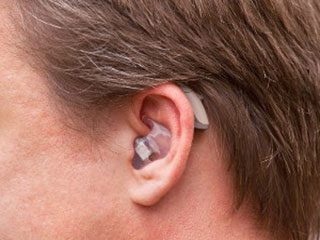
Aug 31, 2016
Ringing in the ears (tinnitus) often accompanies hearing loss. In fact, most tinnitus can be traced to noise-induced damage and age-related changes that occur among the sound-sensing “hair cells” of the inner ear. With this in mind, individuals who experience ringing...

Aug 24, 2016
With a “mild” hearing loss (26 to 41 dB range), people can typically hear one-on-one conversations as long as they can see the speaker’s face and are listening at close range. However, even a mild hearing loss can pose problems if the conversation partner is at a...

Aug 17, 2016
Hearing instruments are primarily designed to amplify speech, not listen to music. Human speech is largely between 30 decibels (dB) and 85 dB. While human speech has a range of about 50 dB, music has a range of about 100 dB, which most hearing instruments cannot...

Aug 10, 2016
While nerve damage (neuropathy) associated with diabetes is commonly concerned with the hands and feet, hearing loss can be another complication of uncontrolled diabetes. Research indicates that people with uncontrolled type-1 or type-2 diabetes are twice as likely as...

Aug 3, 2016
Generally speaking, there are two types of hearing loss. “Sensorineural” hearing loss, which occurs when there is damage to the inner ear (cochlea) or to the nerve pathways from the inner ear to the brain, usually lends itself to treatment with a hearing instrument....

Jul 27, 2016
Because today’s more advanced hearing instruments contain microchips, they can be expected to perform many of the operations found in other computer-driven devices. For instance, just as activity trackers worn on the wrist can keep track of how many steps we take...







